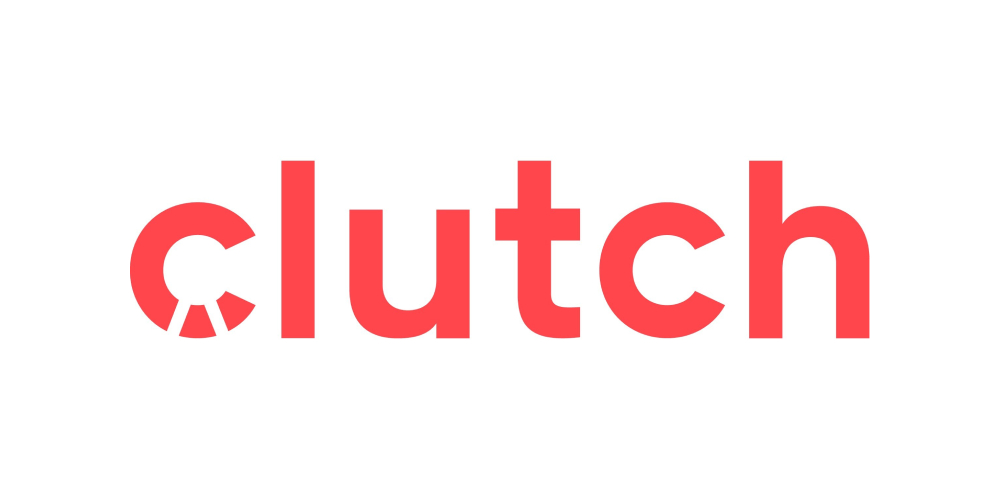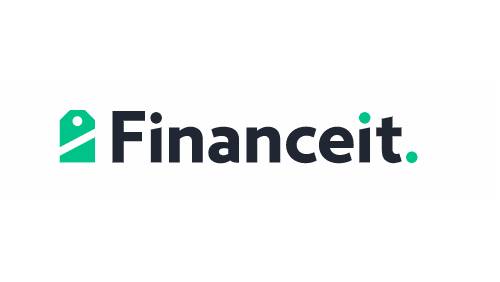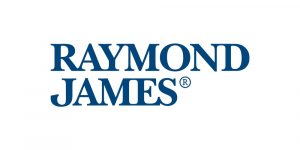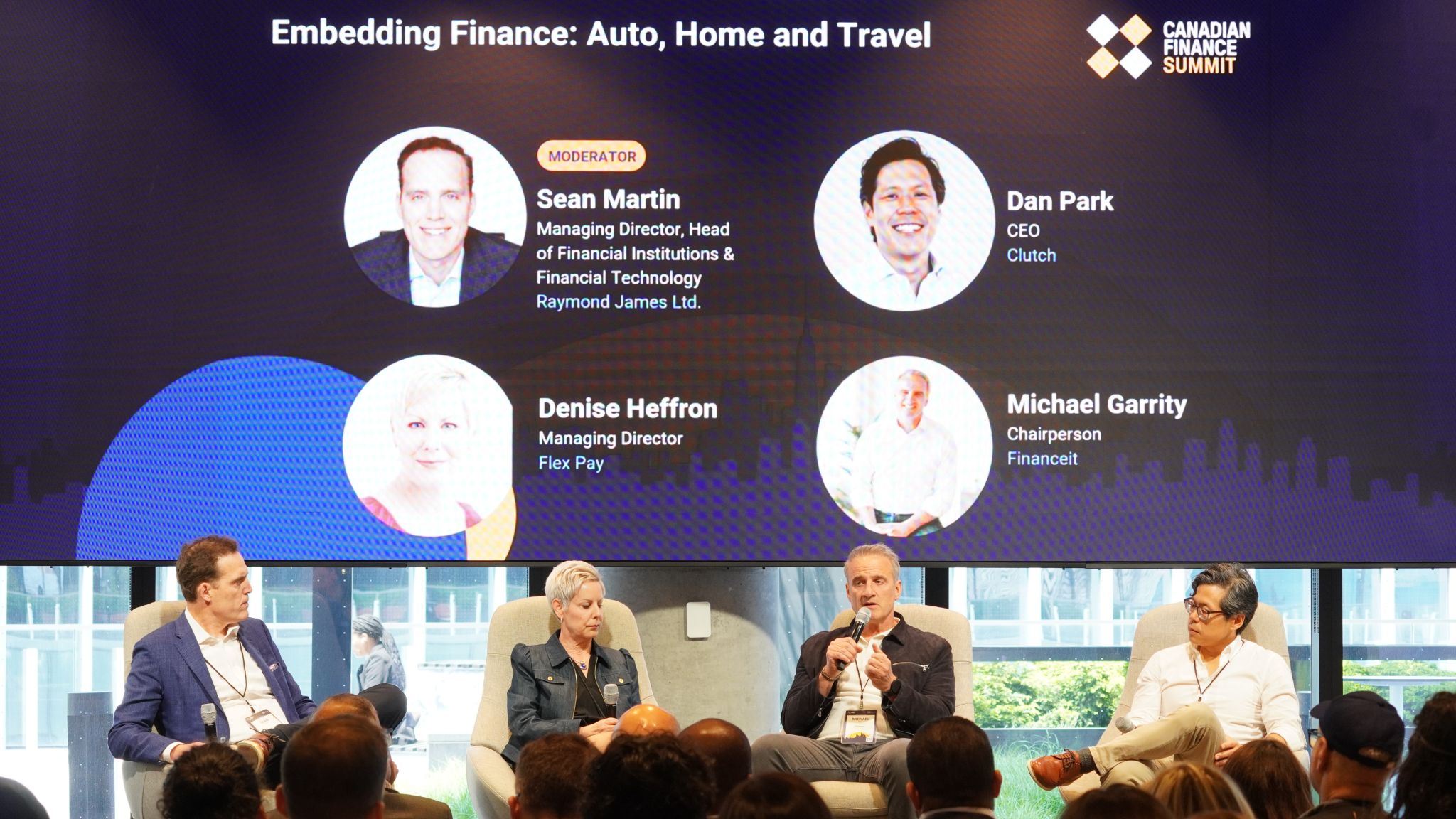Embedding Finance: Auto, Home and Travel
Abstract: At the CLA Finance Summit, Sean Martin of Raymond James moderated a panel on embedded finance featuring Dan Park (Clutch), Michael Garrity (Financeit), and Denise Heffron (FlexPay). The discussion explored how embedded lending is transforming consumer experiences, with each panelist noting that while their platforms are approaching seamless integration, broader industry adoption still lags due to legacy systems and partner readiness. Dan emphasized challenges like outdated wet-signature requirements and rising consumer negative equity. Denise highlighted the importance of transparency and responsible financing, especially in travel. Michael reflected on Financeit’s evolution from peer-to-peer lending to dominating the point-of-sale market through relentless scale and acquisitions. Both Dan and Michael criticized Canada’s risk-averse capital landscape, noting that most of their funding came from U.S. investors. The panel concluded with reflections on global innovation, citing firms like Carvana, Square, and Stripe as leading examples of smart, data-driven embedded finance.

Sean Martin: We have a great panel, and we’re going to talk about embedded lending and embedded finance generally. I’ll introduce our group now.
Let’s start with the consumer journey. Embedded finance and embedded lending are heavily tied to the consumer journey. On a scale of 1 to 10—1 being paper-based and painful, and 10 being seamless, integrated, and beautiful—how would you describe the consumer journey on your platform and in the broader industry?
Dan Park: I want to say 10. The industry is probably a 2 or 3. The way people buy cars hasn’t really changed in almost 100 years. Typically, people walk into a dealership, talk to a salesperson, get convinced to buy whatever car is on the lot, and drive away with it. That’s generally the experience most people have. We’re trying to transform that. We’re an entirely digital platform. We buy cars directly from consumers. We have vertically integrated facilities that recondition those vehicles, and then we sell those cars on a website in a seamless experience. I’d say we’re at about a 7.
The remaining 3 is the reason we’re here today—to talk about how we can get to a 10. That gap is largely due to the financial institutions we work with and how car lending works in Canada today.
Michael Garrity: Our job as an embedded lender is to be as small as possible in every transaction. If someone is replacing their furnace and it costs $11,000, we want to say, “Don’t pay for six months, and then make manageable payments until the loan is paid off.” Embedding our product at the moment of need is how we define our role.
This means we have to recruit merchants, train them, get them to embed our product in their sales platforms—often disparate CRM systems—and make sure the financing offer is presented to the client. Then the client uses a mobile phone to scan their driver’s license and proceed.
Ideally, we could be a 10. The slowdown isn’t from the financial institutions—we use brokered balance sheets, so we control the lending experience. The challenge is at the merchant level. We work with businesses that are very sophisticated in their domain but may not be technologically forward in this aspect. We have to help them catch up, understand their ecosystem, and handle integration. That’s the challenge. In some cases, we’re an 8, and in others, a 2. It depends on the merchant community.
Denise Heffron: My answer is similar. I’d like to say we’re a 10 in terms of our product offering. But again, we work with a variety of merchants. Some are highly sophisticated, and others less so. We typically integrate with large enterprise merchants, midsize firms, and small travel agencies—many of which still use manual processes.
Realistically, we’re probably more of an 8. We want to be frictionless and seamless, but we’re very dependent on our partners’ capabilities.
Sean Martin: Dan, I want to go back to something you mentioned. You’re integrating the financing experience within your platform. What are the challenges in making that as seamless as the rest of the car purchase journey?
Dan Park: A good example is the requirement for physical documents and wet signatures. Even though digital signatures are more secure and verifiable, banks still require us to print documents in advance and obtain wet signatures when a car is delivered or picked up. In 2024, that’s outdated. You can buy a house with DocuSign—you should be able to buy a car that way too.
Another challenge is the rising number of customers with negative equity. A year ago, 7% of people we bought cars from had negative equity. Today, it’s 23%. That’s a big jump. When someone owes more on their loan than their car is worth, they need to pay the difference to sell it. Many people don’t have $5,000 or $6,000 available.
We’ve embedded Affirm and Iceberg into our workflow, so people can finance that negative equity instead of being stuck. Without that, their only option is to keep the car or find the money. That’s not ideal. These options are now becoming available because finance is being embedded into the product flow.
Sean Martin: Your point about negative equity ties into a larger topic: leverage. Denise, from a FlexPay perspective, how do you think about the unintended consequences of making finance widely available for purchases like travel, cars, or home improvements?
Denise Heffron: It depends on perspective. There’s embedded finance at the point of purchase, but also throughout the shopping phase. The term “invisible finance” is often used, which I don’t love because it implies something hidden.
We want to be seamless, but also transparent. We offer sample pricing—estimates of what something might cost monthly—as the customer builds their cart. For example, for a $2,000 trip, they might want to add seat selection, insurance, or other extras. They can see how these affect their budget and affordability.
In the past, people would spend $2,000 on a credit card and decline everything else—no insurance, no meal, no excursions. Then closer to the trip, they’d call back or be contacted about adding those items. Now, installment options let them make better decisions upfront.
There’s a lot of compliance around BNPL and travel finance. When I started this seven years ago, there were myths I had to dispel. Some said their clients didn’t need financing or they didn’t want to put people in debt. But most travelers pay with a credit card, which is fine—if you manage it responsibly. If not, debt builds up quickly, and people lose sight of what they’ve actually spent.
Our loans have clear terms. You know the amount, the interest rate, the term, and the monthly payment. It’s all fixed and transparent.
Sean Martin: Michael, you’ve been leading Financeit for many years. How central has embedded finance been to your success?
Michael Garrity: We started as a peer-to-peer lending platform. That didn’t work during the financial crisis, so we pivoted to point-of-sale lending. At the time, companies like Wells Fargo Financial and CitiFinancial were exiting Canada, and we saw an opportunity.
We didn’t have a lot of money, so we approached these companies and offered to take over their businesses without buying the loan books. We did this with several firms. Eventually, we went to TD and negotiated a deal over 18 months. We built scale through acquisitions and persistence.
Today, we do about $2 billion annually, with 20% growth. We own about 92% of our market. Embedded finance has been essential—but it was our willingness to take risks and keep pitching that got us here.
Sean Martin: Dan, you and Michael have built large, Canada-only businesses. What are the challenges of financing such models?
Dan Park: The Canadian funding landscape is difficult for growth-stage companies. I’ve raised $200 million, mostly from U.S. investors. Early-stage Canadian investors were supportive, but beyond that, it’s mostly American capital.
Investors from San Francisco and New York fly up to visit us. Meanwhile, we couldn’t get a single Canadian investor to drive to Mississauga. That’s telling. It’s not about geography—it’s a mindset. U.S. investors are more aligned with fast-growth, risk-tolerant companies.
Michael Garrity: We had a similar experience. We raised our initial $2 million from Canadian angels, but the remaining $600 million came from the U.S. At one point, Goldman Sachs was backing our U.S. expansion. Our current private equity firm supports our Canada-first strategy and funded a major acquisition. We couldn’t find Canadian capital at that scale.
Sean Martin: Denise, your business depends on corporate partnerships. Can you share insights on that sales cycle and why you’ve focused on a B2B model?
Denise Heffron: Our B2B focus came from our expertise in travel. Large enterprise partners don’t want to join marketplaces—they’ve invested heavily in their brands and loyalty programs. They want to keep customers close.
Integrations in travel are complex. We’ve done white-glove integrations with platforms like Sabre, Soft Voyage, Revelex, and Odysseus. Each integration touches main booking paths, post-purchase experiences, loyalty, and more. It’s not easy, but it’s effective.
That said, we’re exploring new verticals, retail, and international expansion. The strategy was driven by client needs, but we’re now thinking about what’s next.
Sean Martin: Open question—are there international businesses you look to for inspiration in embedded finance?
Dan Park: We look at many comparables: the U.S., Australia, Southeast Asia, Europe, the Middle East. Carvana in the U.S. is one we track closely. They do embedded lending in-house and securitize the loans. We take a different approach, partnering with lenders, both prime and non-prime.
85% of our customers finance their vehicles. We surface all the options transparently and offer advisor support for questions. It’s a hybrid approach—technology plus human guidance.
Denise Heffron: Millennials embrace installment payments because they’re used to subscriptions—Netflix, Spotify, etc. Financing a Coachella ticket may seem odd, but it reflects broader trends in consumer behavior.
Michael Garrity: We follow many innovative firms. Square and Stripe are impressive—they infer a business’s P&L from internal data and extend credit without traditional applications. That’s smart embedded finance: integrated, data-driven, and purpose-built. That’s what motivates us.
Sean Martin: That’s a great place to end. Thank you all for a fantastic discussion.
Here are 10 key insights from the panel:
-
The Consumer Journey Is Still Fragmented
While leading platforms like Clutch (Dan Park) and Financeit (Michael Garrity) offer seamless digital experiences, the broader embedded finance industry lags behind—often at a “2 or 3 out of 10” due to outdated lender processes and merchant tech limitations.
-
Embedded Lending Thrives at the Point of Need
Success depends on making financing invisible but intuitive—offered exactly when and where the customer needs it (e.g., replacing a furnace or booking a trip), with a clear and seamless path to approval.
-
Legacy Requirements Undermine Digital Experiences
Outdated practices like requiring wet signatures or physical paperwork (especially in car financing) are major roadblocks to full digital transformation—even when platforms are otherwise fully automated.
-
Negative Equity Is Reshaping Auto Finance
An alarming rise in customers with negative equity (from 7% to 23% in one year) is driving demand for embedded financing options like Affirm and Iceberg to help consumers trade in vehicles without upfront cash.
-
Transparency in Installments Builds Trust
Consumers—especially younger ones—want predictable, transparent payment plans. Travel financing, for example, now allows customers to see full cost breakdowns and monthly payments upfront, not after purchase.
-
Canadian Growth Capital Is Limited
Both Clutch and Financeit emphasized that U.S. investors fund the majority of their capital. Canadian venture capital remains cautious and unwilling to scale with fast-growing fintechs, creating a major funding gap.
-
Merchant Readiness Is a Key Barrier
Even when fintech platforms are built for embedded lending, the integration depends on merchant partners—many of whom lack the digital readiness to support seamless customer experiences.
-
B2B Partnerships Require Deep Integration
FlexPay’s model highlights the complexity of embedded finance in sectors like travel, where integration must align with loyalty programs, booking systems, and post-purchase flows—demanding tailored, “white-glove” solutions.
-
Embedded Finance Is a Global Movement
Panelists are closely watching global leaders like Carvana, Stripe, and Square, who combine data intelligence and lending infrastructure. These companies infer risk and revenue in real time—offering a model for smarter credit delivery.
-
The Future Is Hybrid: Tech + Human Support
Even in a digitized journey, customers still want guidance. Clutch combines transparent rate shopping with real advisors to help customers navigate financing—showing that embedded doesn’t mean impersonal.
Sign up for the CLA Finance Summit Series








